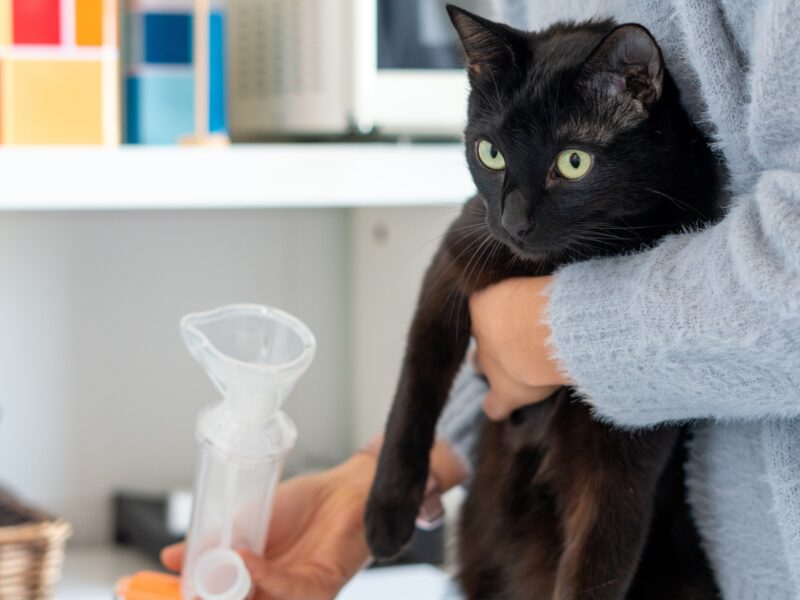Veterinary Emergency Team Deployed By Gov. Abbott To Assist Florida Hurricane Ian Response

Thirteen members of the Texas A&M Veterinary Emergency Team (VET) and seven Texas A&M AgriLife Extension agents have been deployed to Florida by Texas Gov. Greg Abbott in response to Hurricane Ian, one of the deadliest storms to hit Florida in modern history.
The VET was activated on Oct. 4 at the request of Florida officials through the Emergency Management Assistance Compact.
The 13 VET members who deployed in the early hours of the morning will play a vital role in supporting the response and recovery efforts by offering veterinary support for more than 80 urban search and rescue (USAR) dogs, which represents one of the largest USAR deployments in history.
While the VET previously has deployed twice to California in support of wildfire relief efforts, this is the first deployment for the team to the East Coast.
Hurricanes are among the threats that the VET plans for frequently. While each hurricane presents unique challenges, VET director Dr. Wesley Bissett said there are some commonalities to how animals react in these situations.
“Virtually all disasters impact animals,” Bissett explained. “Traumatic injuries and other medical issues resulting from flood waters or storm surges are what we expect to see most with hurricanes. There also are always issues associated with the stress of what the animals will go through.”
Flood waters are very contaminated, which makes them particularly problematic for USAR dogs and resident animals alike. The VET developed a special decontamination unit to assist in removing the contaminants from the search-and-rescue dogs and other small animals brought to the VET base of operations.
Bissett said he and VET are thankful that the State of Texas is committed to a robust emergency response for animals.
“The State of Texas, under the guidance of the Texas Division of Emergency Management and Texas Animal Health Commission, has developed a robust emergency support system, as we all recognize that we must provide for the entire family, including pets, while also protecting the health and well-being of agricultural animals,” Bissett said.
In total, the Texas Division of Emergency Management (TDEM) has mobilized and deployed more than 100 personnel to support Florida’s response and recovery efforts, as directed by Abbott. Personnel deployed include:
- Texas A&M School of Veterinary Medicine & Biomedical Sciences’ VET: consisting of seven veterinarians, six veterinary technicians, three small animal mobile medical platforms, and two mobile veterinary trucks – to provide veterinary support for more than 80 search and rescue dogs.
- Texas A&M AgriLife Extension Service’s Disaster Assessment and Recovery (DAR) Unit: consisting of seven DAR agents – to provide logistical and administrative support for the Texas A&M Veterinary Emergency Team.
- Texas Telecommunicator Emergency Response Taskforce (TERT): Deploying two 9-1-1 dispatchers – one from the Midlothian Police Department and one from the Hood County Sheriff’s Office – to assist impacted Florida counties with their post-storm dispatching responsibilities.
- Texas A&M Forest Service:
- One Texas Intrastate Fire Mutual Aid System (TIFMAS) Fire Engine Strike Team—consisting of 23 firefighters, five fire engines, and two command vehicles—to provide structural firefighting support for local jurisdictions in Florida
- All-Hazards Incident Management Team: 12 personnel supporting field operations in impacted areas and one mobile command post
- Texas A&M Engineering Extension Service:
- Texas A&M Task Force 1 Urban Search and Rescue Team: 45 first responders to carry out search and rescue efforts, four boats, two search and rescue canines
- Texas Division of Emergency Management:
- Emergency Management Assistance Compact (EMAC) Advance Team: Two personnel to support processing assistance requests at the Florida State Emergency Operations Center
- Texas Disaster Recovery Task Force: Five personnel to support volunteer and donations management in impacted areas
Additional resources may be deployed as requested.
Follow the VET’s actions on deployment on the VET Facebook page.
Media contact: Jennifer Gauntt, Texas A&M School of Veterinary Medicine & Biomedical Sciences, jgauntt@cvm.tamu.edu, 979-862-4216





